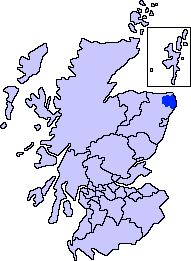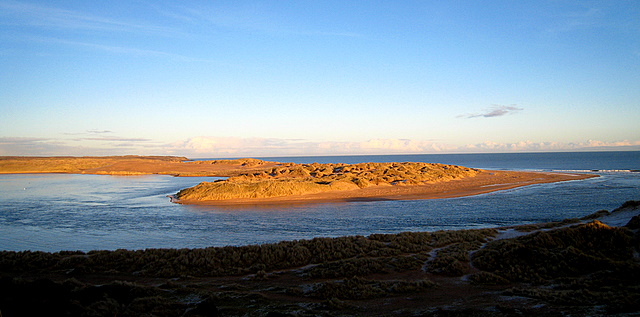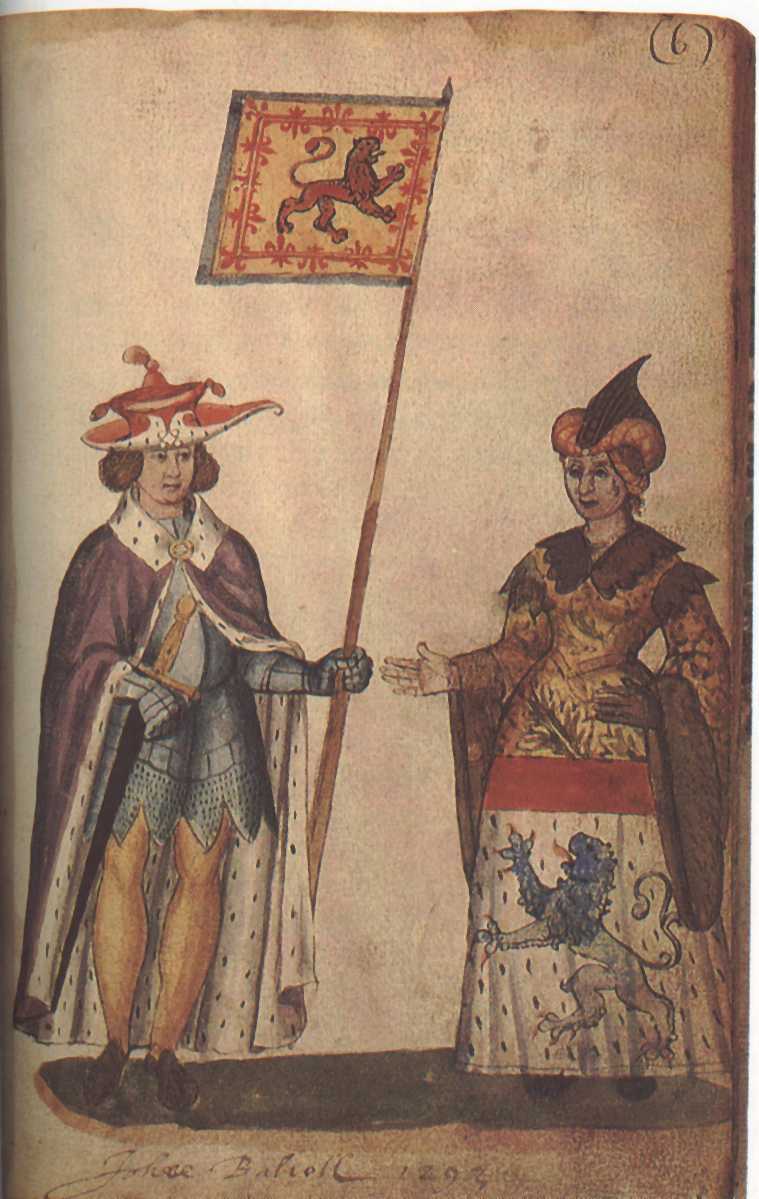|
Formartine
Formartine ( gd, Fearann Mhàrtainn meaning "Martin's land") is a committee area in Aberdeenshire, Scotland. This district extends north from the River Don to the River Ythan. It has a population of 36,478 (2001 Census). The committee area was formed in 1996 from part of the former district of Banff and Buchan. Formartine has experienced rapid population growth, particularly around Ellon and Oldmeldrum, and in the south east where development has spread outwith the city of Aberdeen. By contrast, the area around Turriff retains strong dependency on the traditional agricultural economy. The area's coastline and rural environment offer recreation potential including the Formartine and Buchan Way. History Formartine is first documented as a thanage in 1266, when Reginald Cheyne is recorded holding it in feu-ferm and being liable for 14 merks as 2nd teinds payable to the Diocese of Aberdeen. This would have valued the thanage in 1266 at £96 13s 4d, though by the time of t ... [...More Info...] [...Related Items...] OR: [Wikipedia] [Google] [Baidu] |
Formartine And Buchan Way
The Formartine and Buchan Way is a long-distance trail in Scotland, extending from Dyce north to Peterhead and Fraserburgh in the Buchan and Formartine districts of Aberdeenshire in Scotland. It follows the track of a former railway line, the Formartine and Buchan Railway, and is open to walkers, cyclists and horse riders. The railway closed in 1979 (Fraserburgh) and 1970 (Maud-Peterhead). The walkway opened in the early 1990s, and is managed by Aberdeenshire Council. It is listed as one of Scotland's Great Trails by NatureScot. Places of interest along the way include Drinnes Wood Observatory, Strichen Stone Circle, Aden Country Park, Deer Abbey and The White Horse at Strichen. The total path is around long if both spurs are travelled and can be accessed relatively easily by public transport or car. An information pack detailing the route has been produced by Aberdeenshire Council: the pack can be purchased from local tourist information centres and is also available to downlo ... [...More Info...] [...Related Items...] OR: [Wikipedia] [Google] [Baidu] |
Aberdeenshire
Aberdeenshire ( sco, Aiberdeenshire; gd, Siorrachd Obar Dheathain) is one of the 32 council areas of Scotland. It takes its name from the County of Aberdeen which has substantially different boundaries. The Aberdeenshire Council area includes all of the area of the historic counties of Aberdeenshire and Kincardineshire (except the area making up the City of Aberdeen), as well as part of Banffshire. The county boundaries are officially used for a few purposes, namely land registration and lieutenancy. Aberdeenshire Council is headquartered at Woodhill House, in Aberdeen, making it the only Scottish council whose headquarters are located outside its jurisdiction. Aberdeen itself forms a different council area (Aberdeen City). Aberdeenshire borders onto Angus and Perth and Kinross to the south, Highland and Moray to the west and Aberdeen City to the east. Traditionally, it has been economically dependent upon the primary sector (agriculture, fishing, and forestry) and re ... [...More Info...] [...Related Items...] OR: [Wikipedia] [Google] [Baidu] |
Ellon, Aberdeenshire
Ellon ( gd, Eilean) is a town in Aberdeenshire, Scotland, approximately north of Aberdeen, lying on the River Ythan, which has one of the few undeveloped river estuaries on the eastern coast of Scotland. It is in the ancient region of Formartine. Its name is believed to derive from the Gaelic term ''Eilean'', an island, on account of the presence of an island in the River Ythan, which offered a convenient fording point. In 1707 it was made a burgh of barony for the Earl of Buchan. Places of interest Places of interest within the town include Ellon Castle Gardens, recently brought back to life by volunteers and open to the public (see website for latest opening times). They include a walled garden of historical importance, yew trees dating back 500 years and the ruins of old Ellon Castle, and the surrounding walls known as the ''Deer Dyke''. Ellon also has ''Auld Brig'', a category A listed bridge across the Ythan, built in 1793 and still in use as a pedestrian bridge. T ... [...More Info...] [...Related Items...] OR: [Wikipedia] [Google] [Baidu] |
Buchan
Buchan is an area of north-east Scotland, historically one of the original provinces of the Kingdom of Alba. It is now one of the six committee areas and administrative areas of Aberdeenshire Council, Scotland. These areas were created by the council in 1996, when the Aberdeenshire council area was created under the Local Government etc (Scotland) Act 1994. The council area was formed by merging three districts of the Grampian Region: Banff and Buchan, Gordon and Kincardine and Deeside. The committee area of Buchan was formed from part of the former district of Banff and Buchan. Etymology The genesis of the name ''Buchan'' is shrouded in uncertainty, but may be of Pictish origin. The name may involve an equivalent of Welsh ''buwch'' meaning "a cow". American academic Thomas Clancy has noted cautiously the similarity between the territory names ''Buchan'' and ''Marr'' to those of the Welsh commotes ''Cantref Bychan'' and ''Cantref Mawr'', meaning "small-" and "large-commote ... [...More Info...] [...Related Items...] OR: [Wikipedia] [Google] [Baidu] |
Banff And Buchan
Banff and Buchan is a committee area of the Aberdeenshire Council, Scotland. It has a population of 35,742 (2001 Census). Fishing and agriculture are important industries, together with associated processing and service activity. Banff and Buchan was also the name of a district of Grampian Region between 1975 and 1996. The district covered a much larger area than the committee area, and included what are now the committee areas of Buchan, which, despite its name, is not part of the committee area of Banff and Buchan, and Formartine. Banff and Buchan committee area The area is relatively self-contained, and in recent years has seen a small decline in population. It does, however, have tourism assets in its coastline, coastal villages and visitor attractions. Economic dependency, peripherality, and the future of the Common Fisheries/Agricultural Policies, are key issues. The Buchan Local Action Plan will address some of these concerns. The Area qualifies for European Union ... [...More Info...] [...Related Items...] OR: [Wikipedia] [Google] [Baidu] |
Oldmeldrum
Oldmeldrum (commonly known as Meldrum) is a village and parish in the Formartine area of Aberdeenshire, not far from Inverurie in North East Scotland. With a population of around 2,187, Oldmeldrum falls within Scotland's top 300 centres of population. Oldmeldrum is home to one of the oldest whisky distilleries in Scotland, Glen Garioch, which was built in 1797. Local industries are agriculture and engineering services connected to the oil industry in Aberdeen. Prehistory and archaeology Archaeological excavations in advance of the construction of a new bypass road around the north of Oldmeldrum, in the summer 2005, revealed the remains of three Bronze Age ring-ditch roundhouses. The archaeologists believe that the houses that might be part of an area of open settlement which means the first settlement at Oldmeldrum was 3500 years ago. History The Battle of Barra was fought in May 1308 (some say earlier) near the Hill of Barra between the armies of Scots King Robert Bruce an ... [...More Info...] [...Related Items...] OR: [Wikipedia] [Google] [Baidu] |
Turriff
Turriff () is a town and civil parish in Aberdeenshire in Scotland. It lies on the River Deveron, about above sea level, and has a population of 5,708. In everyday speech it is often referred to by its Scots name ''Turra'', which is derived from the Scottish Gaelic pronunciation. Services and amenities There are four churches in Turriff: St Ninian's (Church of Scotland, 1794), St Andrew's (Church of Scotland), St Congan's (Episcopal Church, 1862), and a Baptist church. Turriff has a primary school, Turriff Primary School, and a secondary school, Turriff Academy. Turriff Primary School is a new build which replaced the old Markethill Primary School and opened to pupils on 22 August 2017. People from the surrounding areas, including the villages of Cuminestown, Fyvie and King Edward, attend the secondary school. Bank of Scotland, Santander UK (formerly Alliance & Leicester), Clydesdale Bank and TSB have branches in the town. The main supermarket chains are Tesco (whose prem ... [...More Info...] [...Related Items...] OR: [Wikipedia] [Google] [Baidu] |
River Ythan
The Ythan is a river in the north-east of Scotland rising at Wells of Ythan near the village of Ythanwells and flowing south-eastwards through the towns of Fyvie, Methlick and Ellon before flowing into the North Sea near Newburgh, in Formartine. The lower reach of the river is known as the Ythan Estuary, is a part of the River Ythan, Sands of Forvie and Meikle Loch Special Protection Area for conservation, particularly the breeding ground of three tern species ( common tern, little tern and Sandwich tern) (Lumina, 2004). The River Ythan has a length of and a catchment area of . As figures of the discharge, /s are given or /s. Nitrate Vulnerable Zone The Scottish Government has designated the River Ythan catchment as a Nitrate Vulnerable Zone following concerns about the spread of algal mats in the river during the 1990s. The resulting restrictions on the use of fertilisers in the catchment were criticised by many farmers, 90% of the land in the catchment area is ... [...More Info...] [...Related Items...] OR: [Wikipedia] [Google] [Baidu] |
Fyvie Castle
Fyvie Castle is a castle in the village of Fyvie, near Turriff in Aberdeenshire, Scotland. History The earliest parts of Fyvie Castle date from the 13th century – some sources claim it was built in 1211 by William the Lion. Fyvie was the site of an open-air court held by Robert the Bruce, and Charles I lived there as a child. Following the Battle of Otterburn in 1390, it ceased to be a royal stronghold and instead fell into the possession of five successive families – ''Preston'', ''Meldrum'', ''Seton'', ''Gordon'' and ''Leith'' – each of whom added a new tower to the castle. The oldest of these, the Preston Tower (located on the far right as one faces the main facade of Fyvie), dates to between 1390 and 1433. The impressive Seton tower forms the entrance, and was erected in 1599 by Alexander Seton. He commissioned the great processional staircase several years later. The Gordon Tower followed in 1778 , and the Leith in 1890. Inside, the castle stronghold features ... [...More Info...] [...Related Items...] OR: [Wikipedia] [Google] [Baidu] |
Royal Forest
A royal forest, occasionally known as a kingswood (), is an area of land with different definitions in England, Wales, Scotland and Ireland. The term ''forest'' in the ordinary modern understanding refers to an area of wooded land; however, the original medieval sense was closer to the modern idea of a "preserve" – i.e. land legally set aside for specific purposes such as royal hunting – with less emphasis on its composition. There are also differing and contextual interpretations in Continental Europe derived from the Carolingian and Merovingian legal systems. In Anglo-Saxon England, though the kings were great huntsmen, they never set aside areas declared to be "outside" (Latin ''foris'') the law of the land. H. R. Loyn, ''Anglo-Saxon England and the Norman Conquest'' 2nd ed. 1991:378-82. Historians find no evidence of the Anglo-Saxon monarchs (c. 500 to 1066) creating forests. However, under the Norman kings (after 1066), by royal prerogative forest law was widely appl ... [...More Info...] [...Related Items...] OR: [Wikipedia] [Google] [Baidu] |
King Of Alba
The monarch of Scotland was the head of state of the Kingdom of Scotland. According to tradition, the first King of Scots was Kenneth I MacAlpin (), who founded the state in 843. Historically, the Kingdom of Scotland is thought to have grown out of an earlier "Kingdom of the Picts" (and later the Kingdom of Strathclyde that was conquered in the 11th century, becoming part of the new Kingdom of Scotland) though in reality the distinction is a product of later medieval myth and confusion from a change in nomenclature i.e. ('King of the Picts') becomes (King of Alba) under Donald II when annals switched from Latin to vernacular around the end of the 9th century, by which time the word in Scottish Gaelic had come to refer to the Kingdom of the Picts rather than Britain (its older meaning). The Kingdom of the Picts just became known as the Kingdom of Alba in Scottish Gaelic, which later became known in Scots and English as ''Scotland''; the terms are retained in both ... [...More Info...] [...Related Items...] OR: [Wikipedia] [Google] [Baidu] |
Mormaer Of Buchan
The Mormaer () or Earl of Buchan () was originally the provincial ruler of the medieval province of Buchan. Buchan was the first Mormaerdom in the High Medieval Kingdom of the Scots to pass into the hands of a non-Scottish family in the male line. The earldom had three lines in its history, not counting passings from female heirs to sons. Today, it is held by the Erskine family as a peerage. The current holder is Harry Erskine, 18th Earl of Buchan (b. 1960). Mormaerdom of Buchan The first recorded person who definitely held the position of mormaer was Gartnait, whose patronage is noted in the Gaelic Notes on the ''Book of Deer''. The latter is the only significant source for the mormaerdom, and its existence makes Buchan one of Scotland's best documented provinces for native cultural institutions. After the death of Fergus, before 1214, Buchan became the first native mormaerdom to pass into the hands of a foreign family, the Comyns, though only through marriage. Alexander Co ... [...More Info...] [...Related Items...] OR: [Wikipedia] [Google] [Baidu] |









